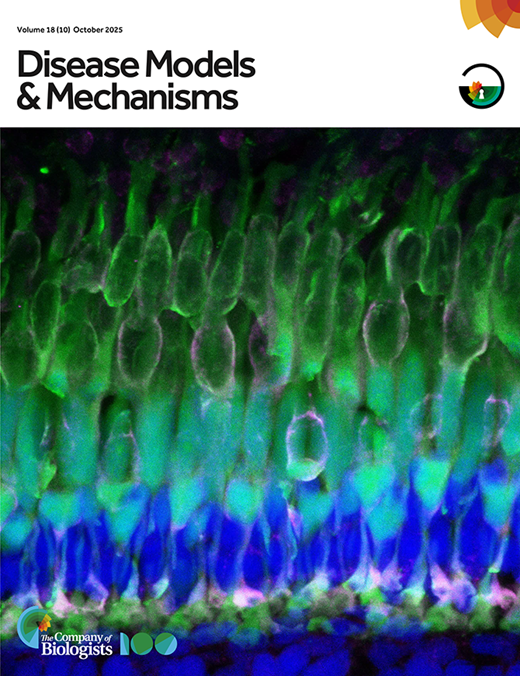Dis Model Mech. 2025 Oct 1;18(10): dmm052426. doi: 10.1242/dmm.052426
Models of Bosch-Boonstra-Schaaf optic atrophy syndrome reveal genotype-phenotype correlations in brain structure and behavior
Johann G Maass1,2, Dominik Kamionek1, Annabelle Mantilleri3, Susanne Theiss1, Laura Dötsch1, Felix Franke1, Tim Schubert1, Jonas G Scheck4,5, Claudia Pitzer6, Paolo Piovani3, Michele Bertacchi3, Olivier Deschaux3, Anubhav Singh1, Chun-An Chen7, Henning Fröhlich1, Michèle Studer3, Christian P Schaaf1
Affiliations
1Institute of Human Genetics, Heidelberg University Clinic, 69120 Heidelberg, Germany.
2Division of Genetics and Genomics, Boston Children’s Hospital, Boston, MA 02115, USA.
3Institute of Biology Valrose (iBV), University Côte d’Azur (UCA), CNRS 7277, Inserm 1091, Avenue Valrose 28, Nice 06108, France.
4Neuroradiology Department, University Hospital Heidelberg, 69120 Heidelberg, Germany.
5Clinical Cooperation Unit Translational Radiation Oncology, German Cancer Research Center (DKFZ), 69120 Heidelberg, Germany.
6Interdisciplinary Neurobehavioral Core, Heidelberg University, 69120 Heidelberg, Germany.
7Department of Molecular and Human Genetics, Baylor College of Medicine, Houston, TX 77030, USA.
Abstract
Bosch-Boonstra-Schaaf optic atrophy syndrome (BBSOAS) is a rare, autosomal dominant neurodevelopmental disorder caused by pathogenic variants in NR2F1, characterized by developmental delay, intellectual disability, optic nerve anomalies and autism spectrum disorder. Most pathogenic variants cluster within the highly conserved DNA-binding domain (DBD) or ligand-binding domain (LBD) of NR2F1 and are associated with variable clinical severity, suggesting a genotype-phenotype correlation. Although previous mouse models have provided important insights, comprehensive behavioral characterization remains limited. Here, we present two novel BBSOAS mouse models harboring patient-specific variants in the DBD (Nr2f1+/R139L) and LBD (Nr2f1+/E397*), alongside the established Nr2f1+/- model. We analyzed brain morphology and behavior to further expand the murine phenotype and investigate the genotype-phenotype correlation. We demonstrate that these models recapitulate key aspects of the BBSOAS phenotype, including deficits in cognition, social communication and motor function, and that the presence and severity of behavioral abnormalities are dependent on variant type. Our findings provide new evidence for a genotype-phenotype correlation associated with domain-specific NR2F1 variants and establish a robust platform for future mechanistic and therapeutic studies.
DOI: 10.1242/dmm.052426

